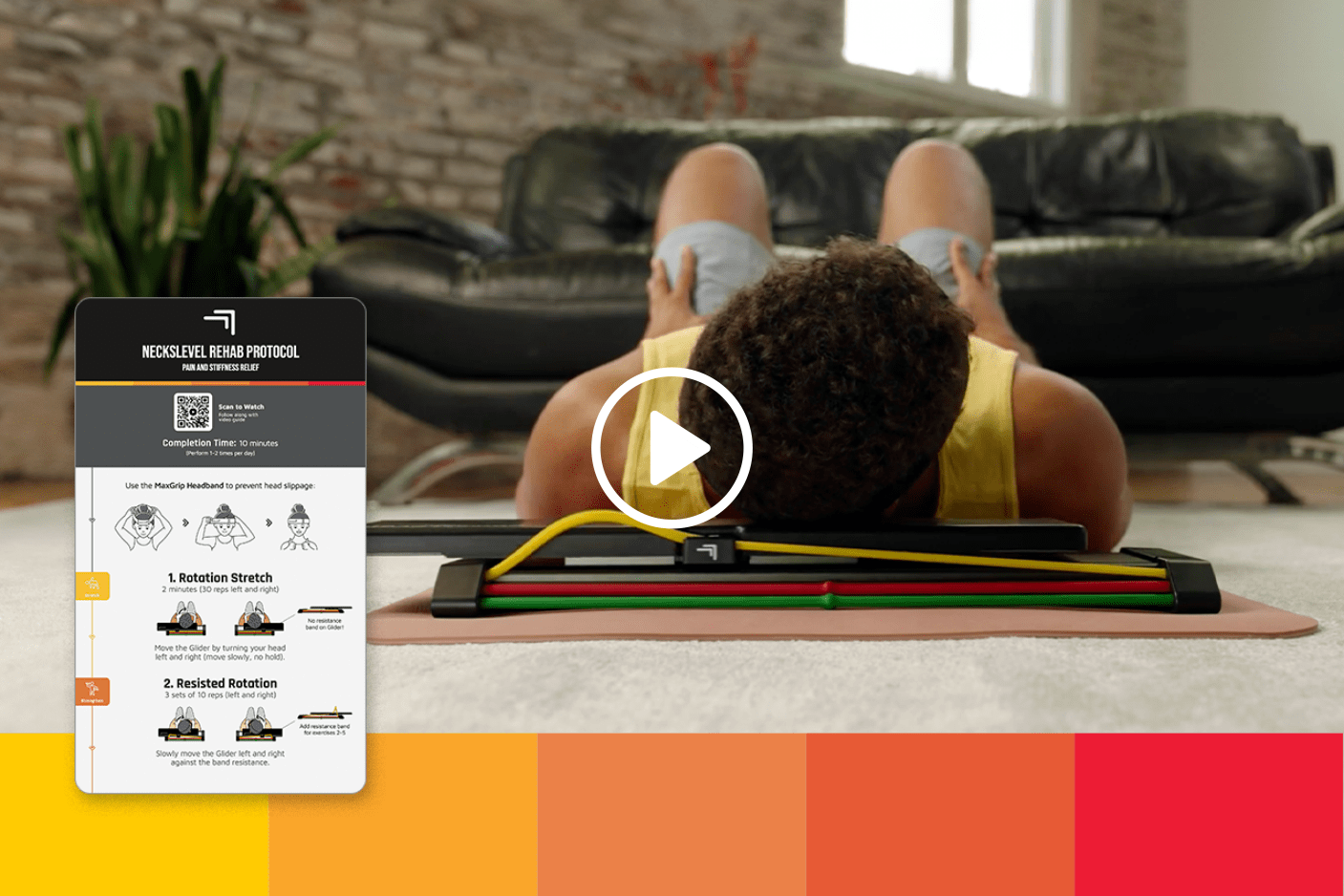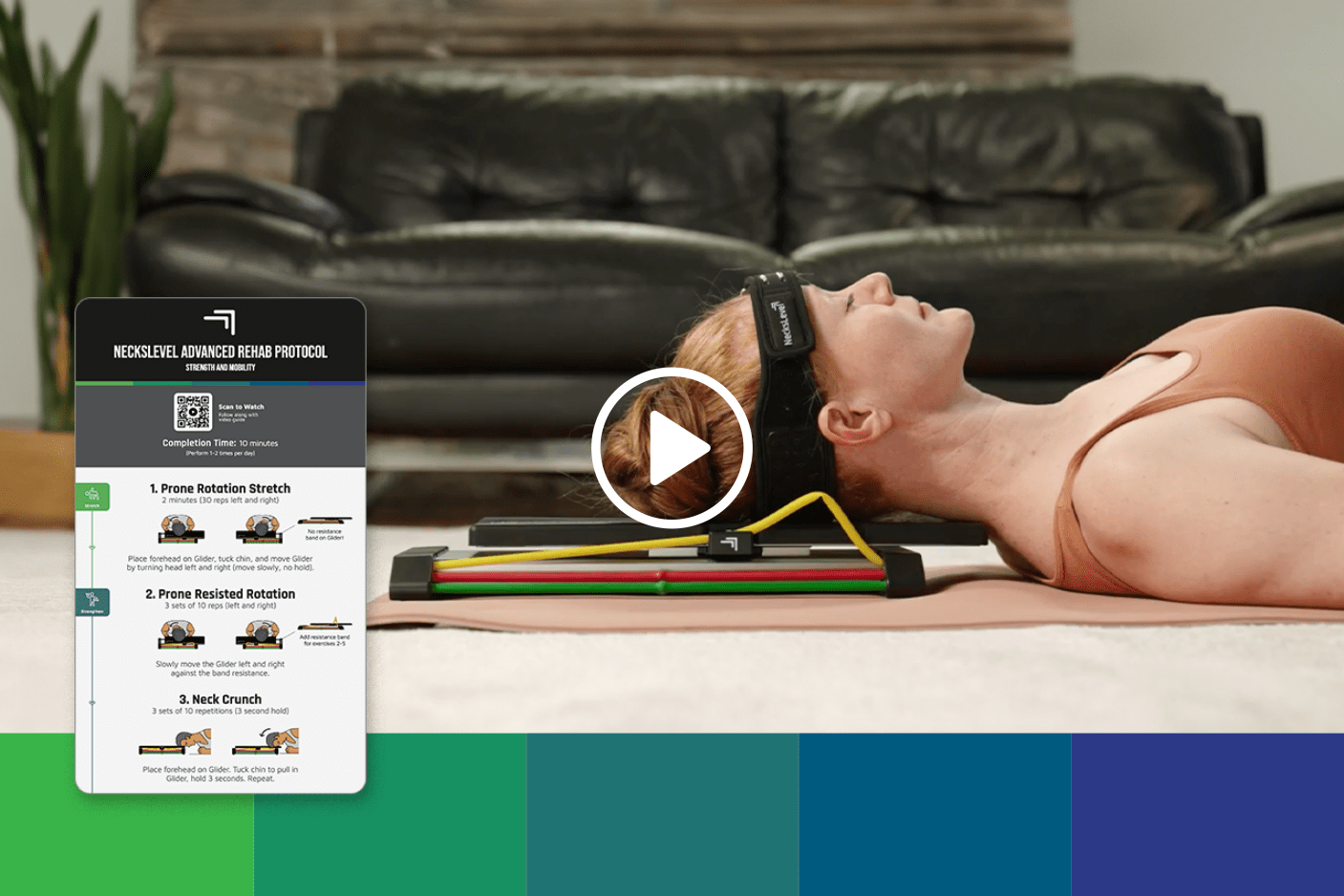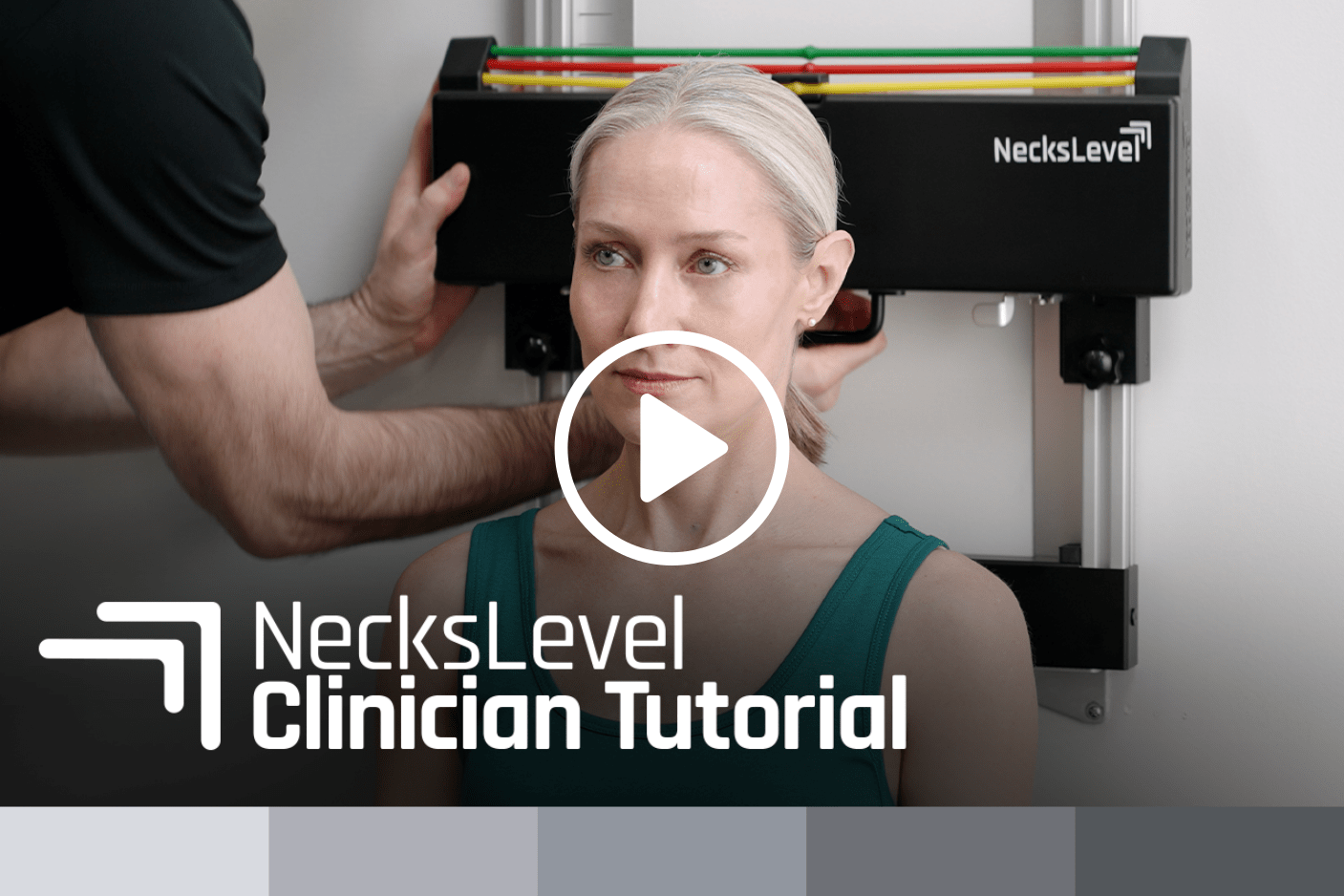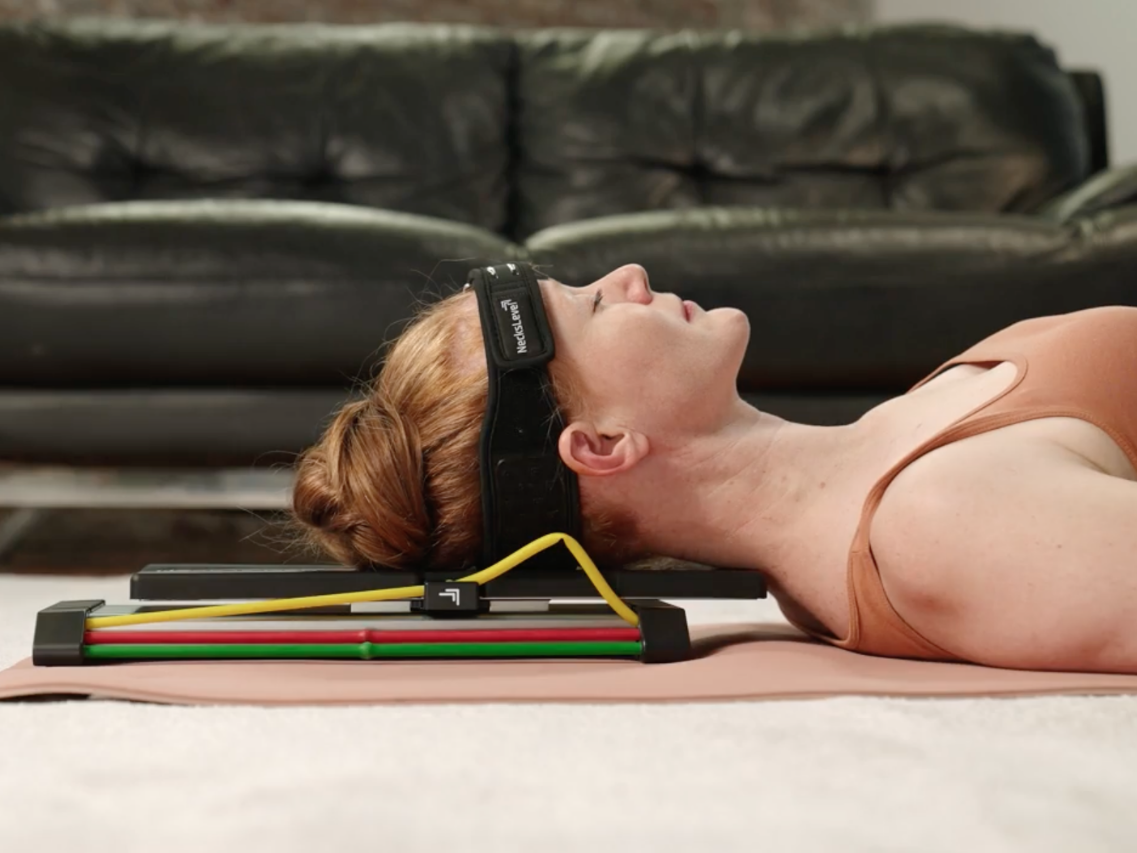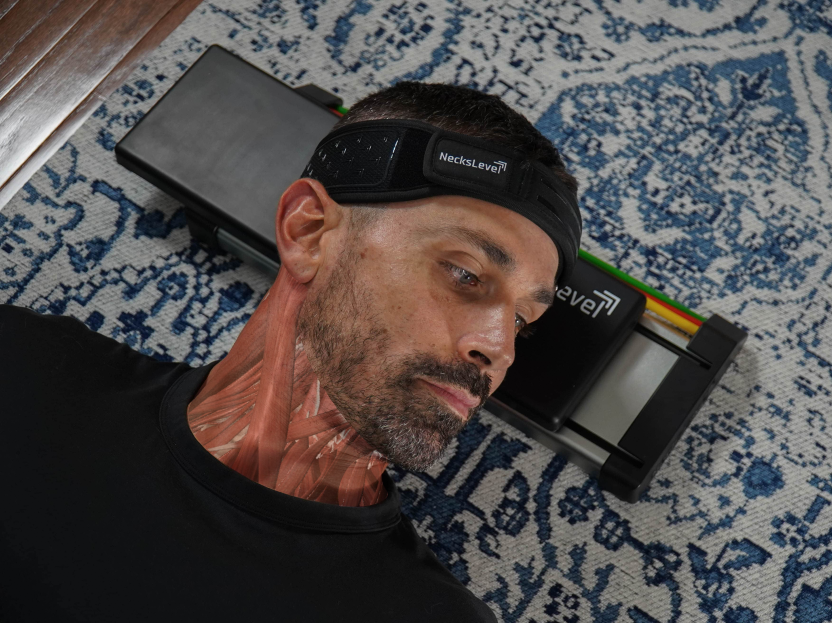Shoulder Blade Muscles & Neck Pain
How they're connected & what to do about it

In this article we'll discuss how the shoulder blades can cause neck issues, how to strengthen the shoulder blade muscles for neck pain relief, and the importance of posture for neck health.
Why are the shoulder blades important for neck pain?
The shoulder blades are directly connected to the neck & affect your posture. Weak & tight shoulder blade muscles can even cause neck pain. However, the correct strengthening & stretching exercises for your shoulder blade muscles can help neck issues.

The shoulder blades control posture
Poor posture can lead to neck pain
Slouched shoulders put the neck in poor alignment which strains the muscles & joints of the neck and can lead to neck pain.
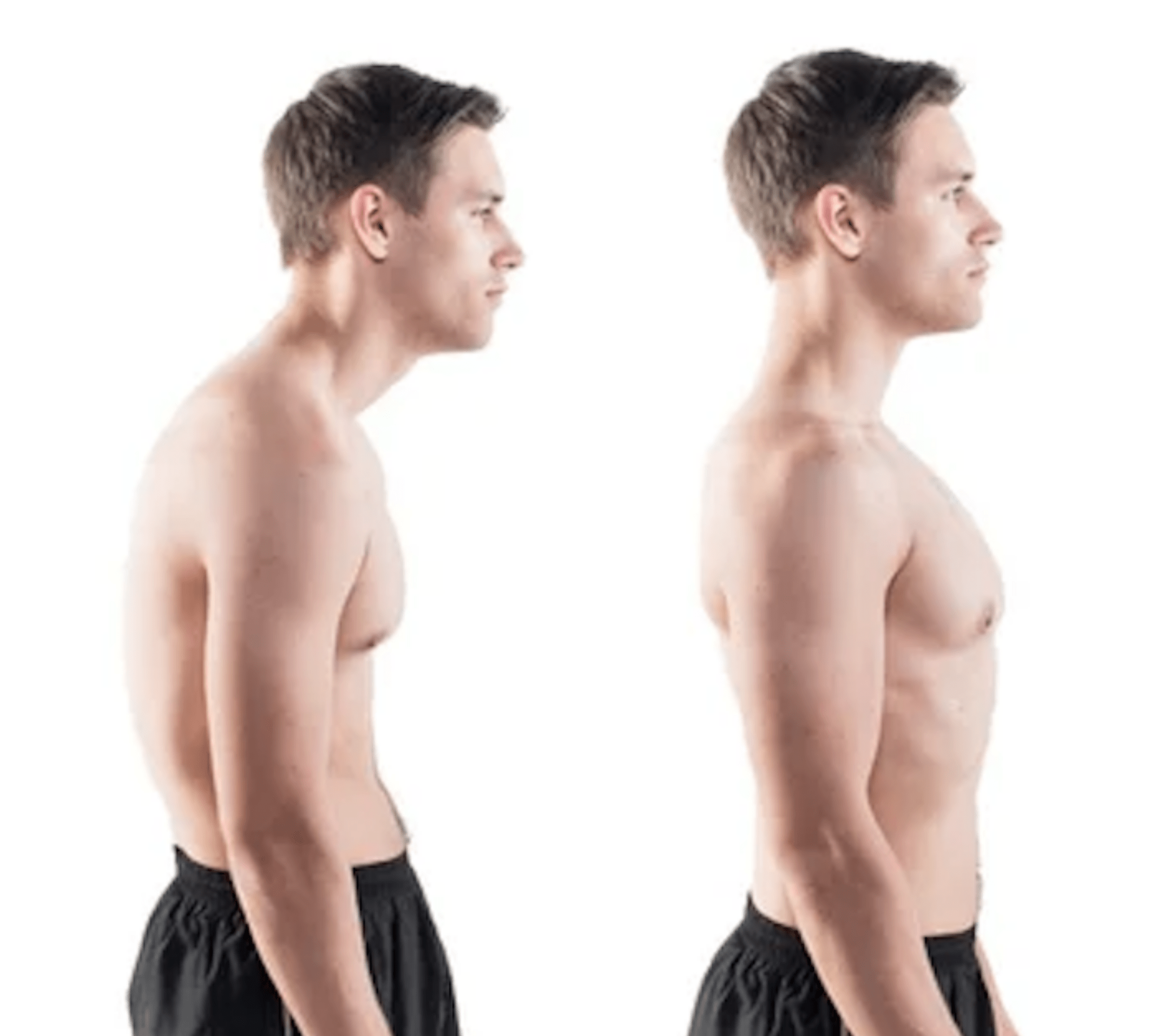
Important Shoulder Blade (Scapular) Muscles for Neck Pain
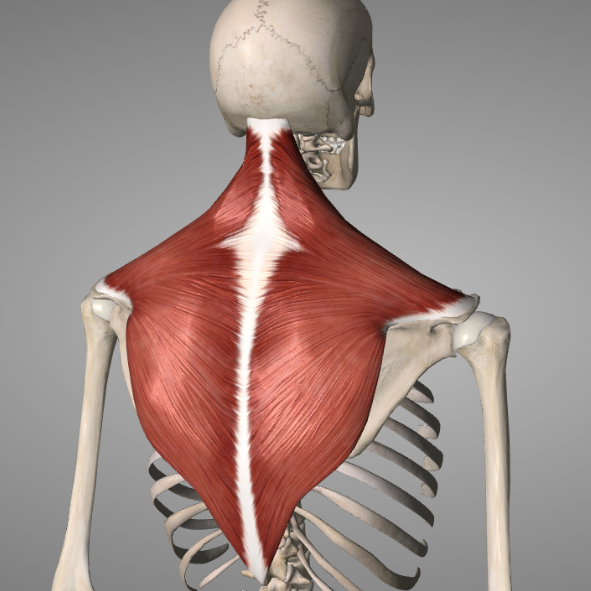
Trapezius
Pull shoulder blades backward
The middle & lower trap help posture while the upper trap can be a source of neck pain & tension.
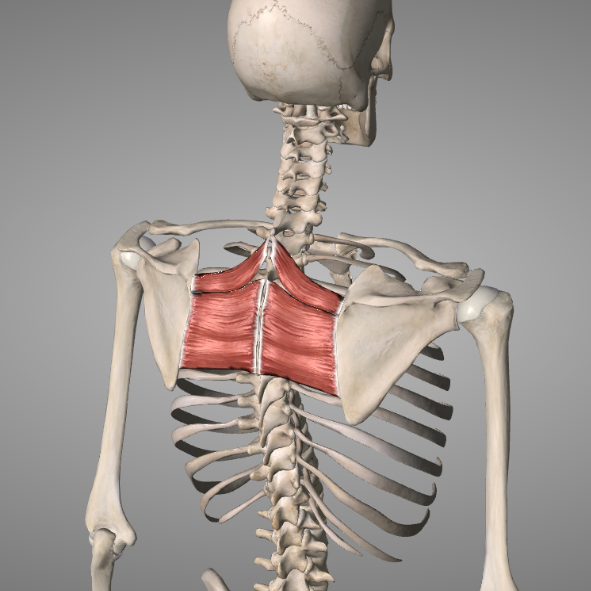
Rhomboids
Pull shoulder blades backward
This muscle helps maintain good posture. Weak Rhomboids can contribute to poor posture & neck pain.
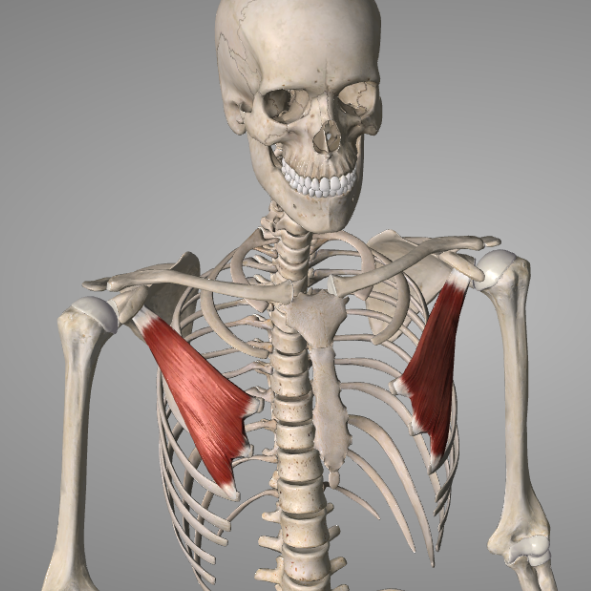
Pectoralis Minor
Pull shoulder blades forward
The pec minor pulls the shoulder blades forward into poor posture which puts the neck in bad alignment.
Scapular Muscles, Neck Pain, & Posture
Which shoulder blade exercises will improve my posture and help my neck pain?
There are 3 important strengthening exercises for the trapezius & rhomboid muscles which will help with your posture & prevent your shoulder blades from slouching forward.
We'll also show you 3 key stretches and massage techniques for the pectoralis minor muscles to release tightness in your chest & improve posture.
To jump to the exercises, click
here.
What equipment will I need to work on my shoulder blades & posture?
To do our recommended exercises for improving your posture & neck pain, you'll need a resistance band, tennis ball (or massage gun), and a foam roller.
Besides exercises for the shoulder blades, what else can help neck pain?
The most directly helpful thing you can do for neck pain is to go straight to the source. Neck strengthening & stretching exercises are a research-backed way to help chronic neck pain. The NecksLevel Glide and Glide Pro were designed by physical therapists to fix the underlying neck weakness & tightness causing neck pain.

NecksLevel Glide
Relieve neck pain & improve mobility with the ideal neck strengthening tool. Pain-free exercises guaranteed to eliminate & prevent neck pain.
Learn More
3 Strengthening Exercises for the Shoulder Blades
These exercises strengthen the trapezius and rhomboid muscles which are important for keeping the head, neck, and shoulders in proper alignment.
Equipment Required: Resistance Band
1. No Moneys | Shoulder Blade Strengthening
Instructions: With palms up and elbows at your side, pull the resistance band apart while squeezing your shoulder blades together.
Sets: 3 sets of 10 reps
2. Rows | Shoulder Blade Strengthening
Instructions: Anchor middle of resistance band on door or banister. Pull band toward you while squeezing shoulder blades together.
Sets: 3 sets of 10 reps
3. Extension | Shoulder Blade Strengthening
Instructions: Keep arms straight and pull hands toward your pockets. Keeps palms forward and squeeze shoulder blades.
Sets: 3 sets of 10 reps
Stretching & Massaging the Shoulder Blade Muscles
These exercises stretch & release the pectoralis minor in the front of the chest. Tight pec minors pull the shoulders forward and can cause neck pain.
Equipment Required: Tennis Ball (or Massage Gun) & Foam Roller
1. Pec Minor Massage | Shoulder Blade Stretching
Instructions: With a massage gun or tennis ball, massage the pec minor muscle which lies just inside the shoulder on the chest.
Perform 1-2 minutes
2. Pec Stretches | Shoulder Blade Stretching
Instructions: Lie on a foam roller to get your shoulder blades back, then stretch the pec minor with arms at your sides and pec major in the field goal position.
Perform 1-3 minutes per stretch
3. Shoulder Rolls | Shoulder Blade Stretching
Instructions: Perform backwards shoulder circles to stretch the pec minor and activate the trapezius and rhomboid muscles.
Perform 20 reps
Posture Reminder - Squeeze your shoulder blades back
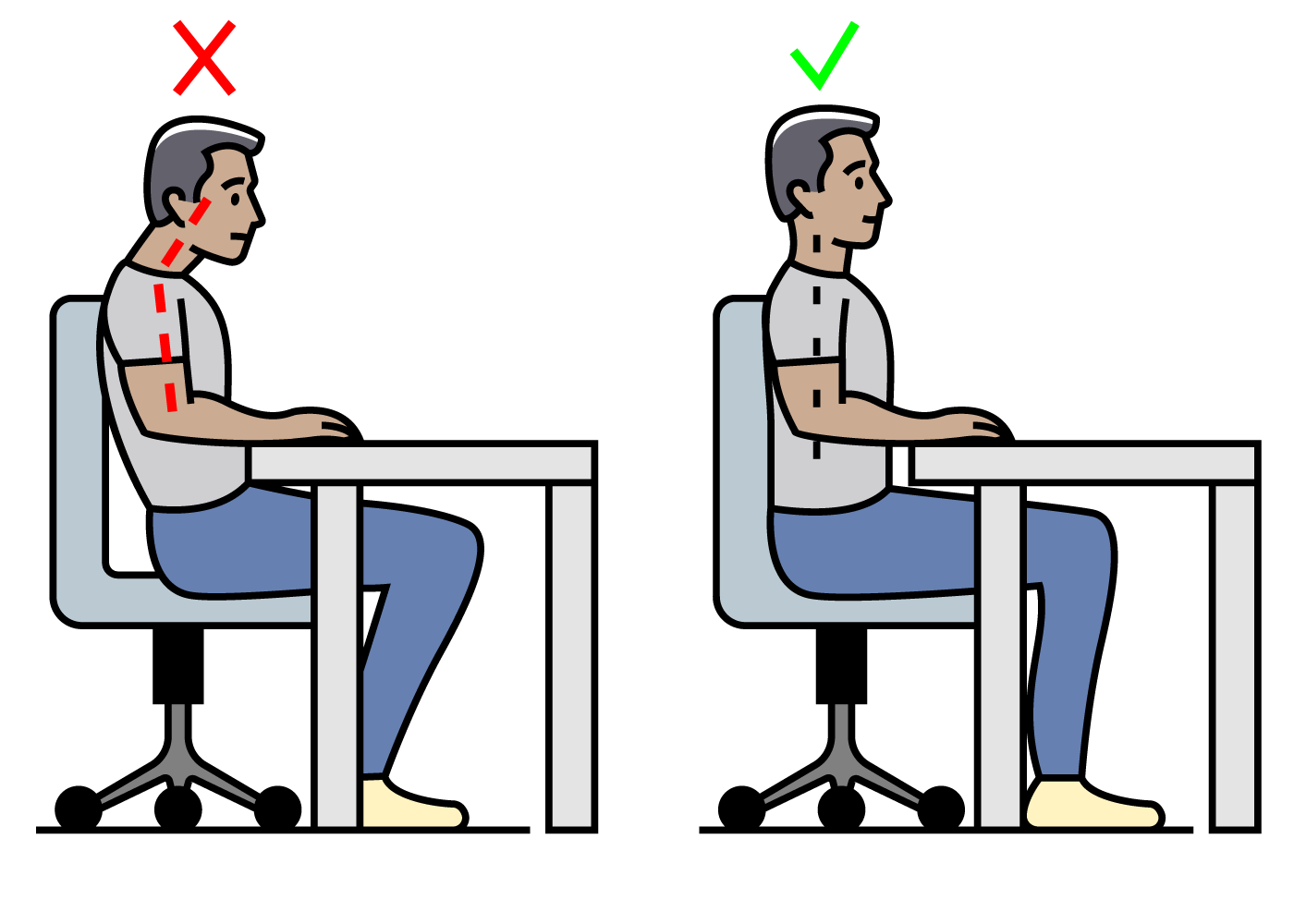
Posture hack:
Whenever you notice your neck is bothering you, remind yourself to sit up tall and pull your shoulders back. This will automatically take stress off your neck.
Summary: Scapular Muscles, Neck Pain, & Posture
The shoulder blades can play a role in chronic neck pain
Try our recommended shoulder blade exercises to improve your posture and help with neck pain. We recommend a few weeks of training to determine if the exercises are helpful. Remember, we want to strengthen the scapular muscles in the back, and stretch out the pecs in the front. These exercises are commonly used in physical therapy clinics for posture & neck pain.
The neck and shoulder blades are intimately related
The shoulder blade muscles attach to your neck and greatly affect posture. With this is mind, it's important keep your shoulder blades strong & be consistent with these simple exercises. Now, we'll turn to what's next if you still need help with neck pain.
What if your neck still hurts?
The shoulder blades are often just part of the equation. Targeted neck rehab exercises for neck strengthening & stretching is most important. Luckily, we can help you with neck strengthening as well. It's what we do best.

NecksLevel Glide: Neck Strengthening Device
Doctor-invented for neck pain relief
Treat neck pain at the source
Weakness & tightness of the neck muscles can now be fixed with a few simple exercises on the NecksLevel Glide.
Shop Now
FAQs - Shoulder Blade Muscles & Neck Pain
How will strengthening my shoulder blade muscles help my neck pain?
You can think of shoulder blade strengthening as building a sturdy foundation for your neck. With a strong base and good posture, neck health improves. Most physical therapy programs for neck pain include several shoulder blade & posture exercises.
Will these shoulder blade exercises help my posture?
Yes, the exercises in this blog were selected because they are great for addressing two of the main issues causing poor posture:
1. Weak shoulder blade muscles (middle & lower trapezius, rhomboids)
2. Tight pec muscles
Addressing these two factors will help you get your shoulders back and maintain good posture.
How long will it take to see improvement in my shoulder blade strength & posture?
You can expect to see results in 4-6 weeks of consistent exercise 2-3x per week.
Written by:

Dr. Scott Dickenson, DPT, ATC
Physical Therapist
Scott is an Orthopedic Physical Therapist specializing in neck pain with nearly a decade of clinical experience. He regularly speaks at national Physical Therapy, Athletic Training, & Chiropractic conferences on neck injuries & rehab in sport.
NecksLevel Glide
"Like having a Physical Therapist in your home"
Professional neck strengthening and stretching in one compact device. Relieve neck pain while reducing neck stiffness & improving your posture.
Shop Now



